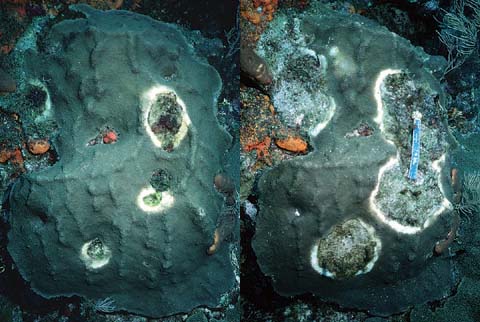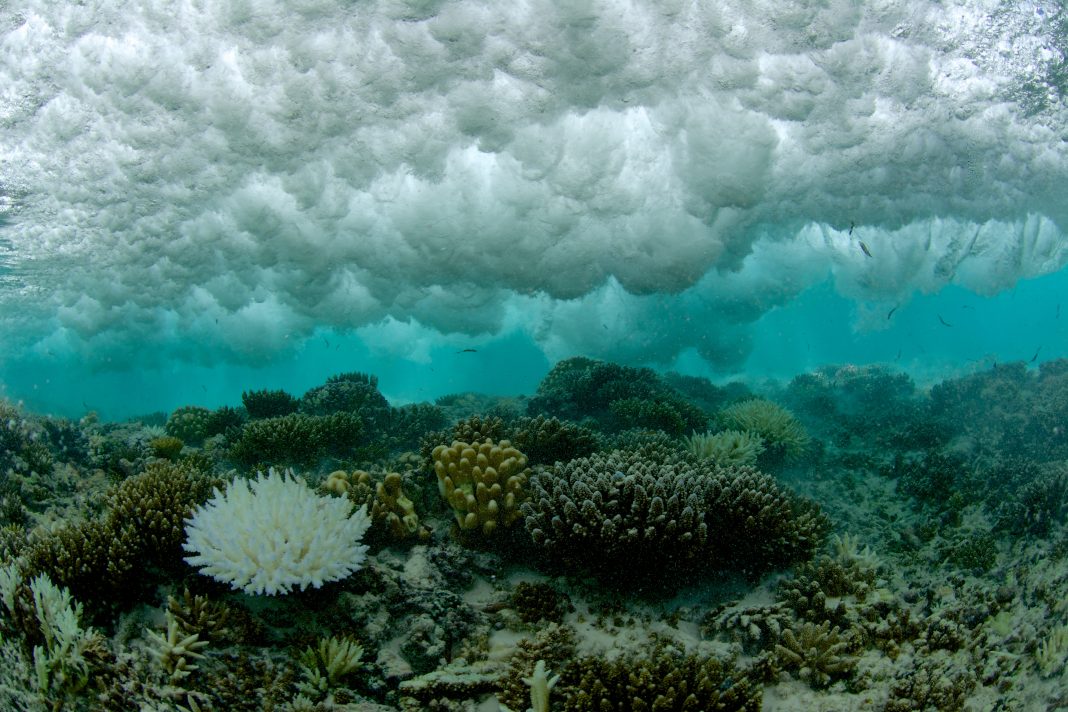As global temperatures rise, deadly coral disease is becoming more prevalent on reefs. Likely to become endemic, researchers highlight the need for urgent mitigation of coral disease
Coral reefs are a key driver of marine ecosystems. Supporting almost a quarter of the world’s fish, reefs are threatened by sea temperature changes brought on by climate change, which has caused the spread of coral disease over the last 25 years.
Vital for coastal communities, fisheries and tourism, corals are an animal that sustain entire reef habitats globally – yet are experiencing infectious pathogens like bacteria and fungi which ultimately cause coral disease.
Corals can become stressed through temperature changes, human activity and more, which make them vulnerable to infection. Rising water temperatures increase growth rate of disease-causing organisms.
Researchers studying coral diseases – known for their black band disease or yellow band disease patterns – aim to identify the disease-causing pathogens to prevent the eradication of entire reef habitats.
Coral disease prevalence could increase to 76.8% by 2100
Linking the disease surveys to ocean sea surface temperature records, researchers from UNSW Sydney gathered data to understand how ocean warming has influenced coral disease prevalence worldwide.
The team analysed 108 studies of coral health where coral reefs were surveyed for disease symptoms. They then performed modelling to forecast disease under future warming scenarios.
The data showed that coral disease increased with ocean temperatures over time, tripling over the past 25 years to 9.92% globally.
The models also predicted that disease prevalence could increase to 76.8% in 2100 if temperatures continue to rise on the same trajectory – the most conservative worst-case scenario.

Which coral reef areas are the worst affected?
Based on current data, coral disease has been predicted to worsen more in the Pacific Ocean than in the Atlantic Ocean or Indian Ocean.
Samantha Burke, a PhD candidate at the School of Biological, Earth & Environmental Sciences, said: “Particular oceans are more at risk, but it’s difficult for us to know whether that is solely from warming ocean temperatures or combined with the many other stressors coral face.
“But what is clear is that coral disease prevalence is climbing across the globe, and without urgent action to address warming temperatures, more coral will become diseased.
“They are the habitat builders. Without coral, there is no reef environment and no coastal industry.”
Other factors also influence coral disease prevalence
Corals are sensitive organisms and require a precise range of environmental conditions to survive, including water temperature, salinity, and quality. Living outside this normal range can make corals ‘stressed’, meaning they are less able to grow, reproduce and survive.
Research finds that coral disease is different from coral bleaching – which is when corals turn white under stress by expelling the zooxanthellae algae that live inside their tissue responsible for colouration – but both are already having a serious impact on coral reefs globally.
“Because reefs take a long time to establish, the coral may not recover, and entire sections of the reef can be lost.”
Samantha Burke, a PhD candidate at the School of Biological, Earth & Environmental Sciences, said: “Coral disease is a serious cause of coral mortality globally and reef decline, and our modelling predicts it will only continue to worsen – even if ocean temperatures remain conservative.
“Certain diseases act more quickly than others, but most corals that get diseased end up dying from it. Because reefs take a long time to establish, the coral may not recover, and entire sections of the reef can be lost.
“As the ocean warms, it increases coral stress which can decrease its immune response. Increasing temperatures can also create more favourable conditions for the pathogen causing disease.
“It’s still relatively unknown whether the microbes associated with diseased coral are the cause or a symptom of disease, just that the coral is sick, and the tissue is dying.
“Whether the fungi or bacteria present caused disease or merely fed on the dying tissue is unclear, so researchers need to study it further.”
“We can’t just wait around and hope for a silver bullet like a universal antibiotic.”
“Given what’s at stake, we need to take many steps forward to develop effective mitigation strategies, and addressing increasing temperatures would be a great place to start.”











